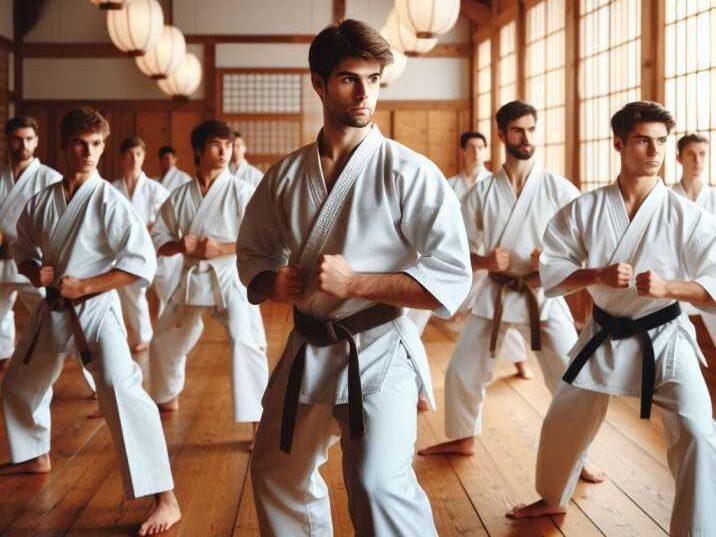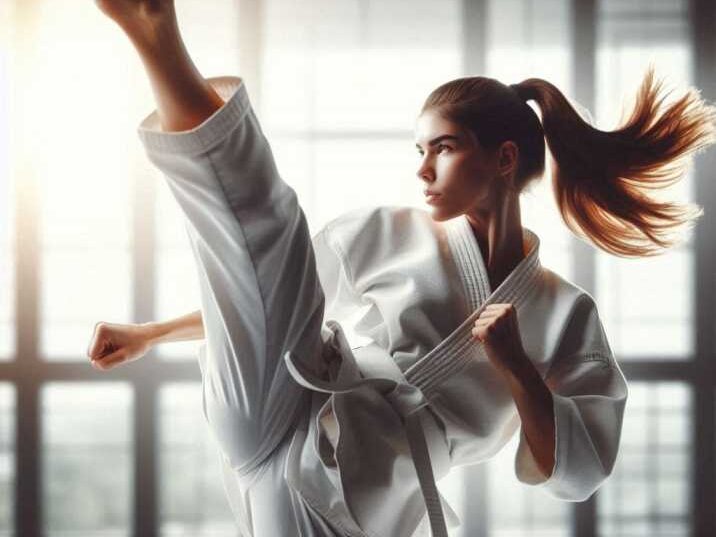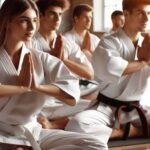Introduction
Table of Contents
Karate is an ancient martial art that comes in many different styles, each designed to teach students unique techniques and philosophies. From self-defence to discipline and focus, karate styles offer students of all ages, especially kids, a way to improve their physical and mental abilities. But with so many styles to choose from, how can you find the best karate style for you?
This guide will introduce you to some of the most popular karate styles, explaining their main features, benefits, and training focus. By the end, you’ll know more about which style could be the best fit for you!

Table of Contents
- What is Karate?
- The Importance of Choosing the Right Style
- Top Karate Styles Explained
- Shotokan Karate
- Goju-Ryu Karate
- Shito-Ryu Karate
- Wado-Ryu Karate
- Kyokushin Karate
- Uechi-Ryu Karate
- Isshin-Ryu Karate
- How Karate Improves Focus and Discipline
- Table of Karate Styles and Their Key Benefits
- FAQs about Karate Styles
- Conclusion
What is Karate?
Karate is a martial art that originated in Okinawa, Japan and is now practised all over the world. It focuses on self-defence, using punches, kicks, and blocking techniques to help practitioners defend themselves while also improving physical strength and agility. Karate has many styles, each with different techniques and philosophies that set it apart.
The Importance of Choosing the Right Karate Style
Choosing the right karate style can make a big difference in your training experience. Different styles focus on different skills, such as powerful strikes, fluid movements, or grappling techniques. Some styles are better for beginners, while others require more physical strength or advanced skills.
By choosing the right style, you’ll enjoy your training more and see better results in areas like focus, discipline, and physical fitness
Top Karate Styles Explained
1. Shotokan Karate
Shotokan Karate is one of the most widely practised karate styles in the world. It emphasizes strong stances, powerful strikes, and speed. Shotokan is known for its structured forms, or “katas,” which help build precision and focus.
- Best For: Beginners and students looking for a disciplined style.
- Main Focus: Basic strikes, kicks, and blocks with a strong emphasis on form.
2. Goju-Ryu Karate
Goju-Ryu Karate combines both “hard” and “soft” techniques. In Goju-Ryu, students learn how to block and strike, but also how to evade attacks and move fluidly. This style incorporates breathing exercises to improve strength and mental focus.
- Best For: Those interested in self-defence and fluid movements.
- Main Focus: Balance between hard strikes and soft, circular motions.
3. Shito-Ryu Karate
Shito-Ryu Karate focuses on both strong, direct strikes and circular, flowing movements. This style also includes a wide variety of katas, making it one of the most versatile karate styles.
- Best For Students who want a well-rounded karate experience.
- Main Focus: A blend of powerful and fluid movements for both offence and defence.
4. Wado-Ryu Karate
Wado-Ryu Karate is unique because it combines karate with the principles of Jujitsu. This style emphasizes evading and redirecting attacks rather than meeting force with force. Wado-Ryu practitioners learn to focus on light, quick movements.
- Best For Students who enjoy fluid and graceful movements.
- Main Focus: Redirecting an opponent’s energy to gain control.
5. Kyokushin Karate
Kyokushin Karate is known for its full-contact training. This style is very physically demanding and focuses on building strength and endurance. Kyokushin practitioners train hard and are known for their ability to perform under pressure.
- Best For: Older students and teens who want intense physical training.
- Main Focus: Full-contact sparring and strong techniques.

6. Uechi-Ryu Karate
Uechi-Ryu Karate has roots in Chinese martial arts and focuses on quick, snapping strikes and close-range fighting techniques. This style emphasizes strengthening the body through repetitive conditioning exercises.
- Best For: Students interested in traditional martial arts training.
- Main Focus: Close combat and strong, fast techniques.
7. Isshin-Ryu Karate
Isshin-Ryu Karate combines elements of Goju-Ryu and Shorin-Ryu karate. This style is known for its unique techniques, like vertical punches, which are faster and allow students to respond quickly in close combat.
- Best For Those who want a modern karate style with unique techniques.
- Main Focus: Quick responses and effective strikes in close combat.
How Karate Improves Focus and Discipline
Karate requires concentration, discipline, and self-control. The focus required in each movement and technique often translates to other areas of life, like schoolwork and hobbies. Practicing karate can help students build:
Better Concentration
Karate helps students develop focus by teaching them to concentrate on specific movements and techniques. Each kick, punch, or block requires attention to detail, which can improve the ability to focus on schoolwork and other tasks. By practising consistently, students learn to avoid distractions and stay engaged, skills that can transfer to different areas of life.
Self-Discipline
Karate training requires students to practice the same techniques repeatedly, which helps them build self-discipline. This repetition not only strengthens their skills but also instills a routine of dedication and perseverance. Over time, students learn the importance of self-control and patience, making it easier to tackle challenges and meet goals in other activities.
Physical Fitness
Physical fitness is a key component of karate, involving exercises that strengthen the body, improve balance, and increase agility. Through karate, students engage in regular cardiovascular and strength training, enhancing their endurance and coordination. This physical conditioning boosts overall health and provides a strong foundation for more advanced techniques as they progress in their karate journey.
Table of Karate Styles and Their Key Benefits
| Karate Style | Best For | Main Focus |
|---|---|---|
| Shotokan | Beginners | Strong stances, powerful strikes |
| Goju-Ryu | Self-defense | Balance of hard and soft techniques |
| Shito-Ryu | Versatile training | Powerful and fluid movements |
| Wado-Ryu | Graceful movements | Redirection and evasion |
| Kyokushin | Intense training | Full-contact sparring, endurance |
| Uechi-Ryu | Traditional approach | Close-range, quick strikes |
| Isshin-Ryu | Unique techniques | Fast responses, effective close combat |
Conclusion
Each karate style offers something unique, from the strong stances of Shotokan to the fluid movements of Goju-Ryu. No matter which style you choose, practising karate can help you develop valuable life skills like focus, discipline, and resilience. Consider your goals and physical abilities to find the best karate style for you. Remember, there is no “wrong” style—just the one that feels right for you.
FAQs About Karate Styles
1. What is the best karate style for beginners?
Shotokan and Wado-Ryu are excellent for beginners due to their clear structure and approachable techniques.
2. Which karate style is the most physically demanding?
Kyokushin Karate is very intense and is known for its full-contact sparring and physical endurance.
3. Can kids practice all karate styles?
Yes, but some styles, like Kyokushin, may be more challenging for younger children.
4. What karate style focuses on self-defence?
Goju-Ryu and Wado-Ryu are both great for self-defence, focusing on evading and redirecting attacks.
5. Do all karate styles include sparring?
Not all styles focus heavily on sparring. Styles like Shotokan may focus more on katas, while Kyokushin emphasizes sparring.


